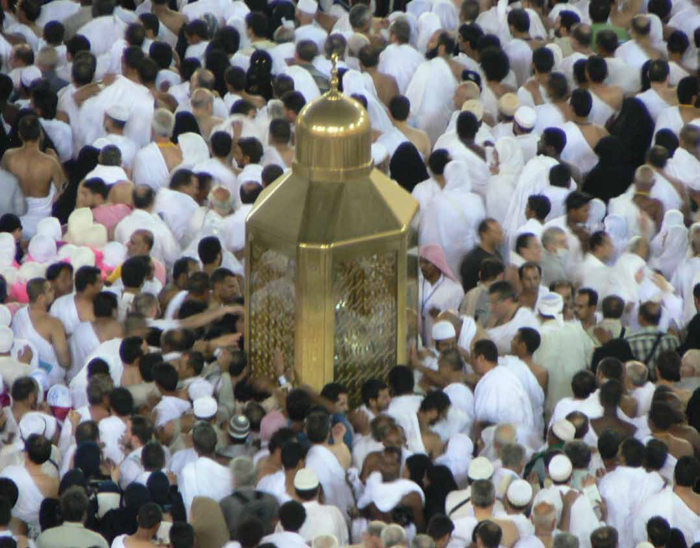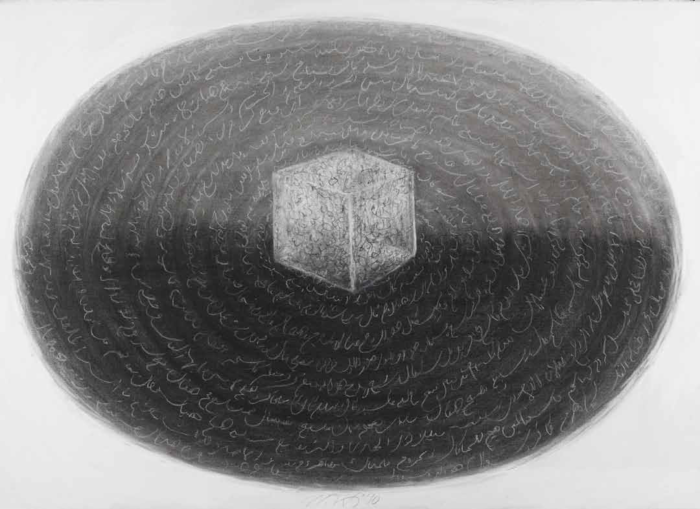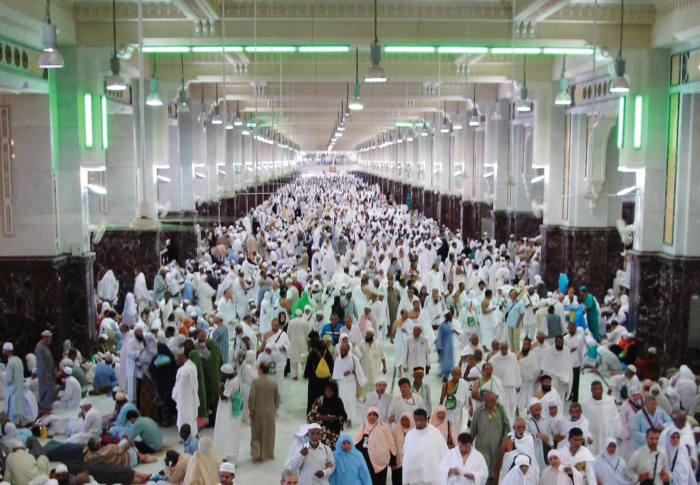Being in the House of Allah
Seeing the Ka'ba
The feeling of really "being there" in Makkah is confirmed when pilgrims see the ka'ba for the first time. Inside the Great Mosque, Masjid al-Haram, many approach the black kiswa (curtain) covered stone with heads bowed out of respect but also to intensify that first glance.
Pilgrims describe being "overcome", "humble", "insignificant", "overwhelmed" and "privileged". Such emotions also have a powerful effect on the body: "you're vibrating ... it just fills you up ... you just want to stand there forever".
I was asking my mother and sister to keep their gaze down and I will hold your hands and I will take you to a point where you can lift your head and see the Kaba in its full glory. ... What a blessing it is to be... going around the Kaba Sharif at that time.
The Tawaf and Tawhid
As part of the rituals pilgrims circumambulate the ka'ba anticlockwise seven times. This tawaf affirms a powerful sense of tawhid or unity for pilgrims, both in terms of God and the order of his universe but also their own and others' purpose in worshiping at His House.
During the tawaf pilgrims offer many recommended and personal supplications. Some hope to touch or kiss the black stone lodged in the fourth corner of the ka'ba. However the sheer numbers present during Hajj today make this very difficult.
And the shine, it was just so bright, you know, the material over the Kaba, the gold threading that's on it, it was just shining. And there's this nice smell. It's quite overwhelming and I think when I've seen it, it made me cry thinking, 'Yeah, there is truth that there is Islam.'
In the Footsteps of the Prophets
Pilgrims offer prayers, too, at the Maqam Ibrahim (the Station of the Prophet Abraham). Here he prayed together with his son, Prophet Isma'il, when they were rebuilding the ka'ba established by Prophet Adam. The rituals also involve pilgrims in re-enacting the ordeals of Ibrahim's wife, Hajar.
All pilgrims, male and female, hurry seven times between al-Safa and al-Marwa as she did searching for water in the desert to give Isma'il. Once two hills, today's sa'i is performed inside on marble floors. Pilgrims drink, too, from the miraculous spring of Zamzam water created by Allah to save Hajar and Isma'il.
Of course there's a spiritual side of it that you feel connected. Hajj is Abrahamic tradition. Abraham built that house which is Kaba and he did go around that he called people, he was instructed by God to call people to come and visit this Kaba, and he did that, so it's still Abrahamic tradition.



